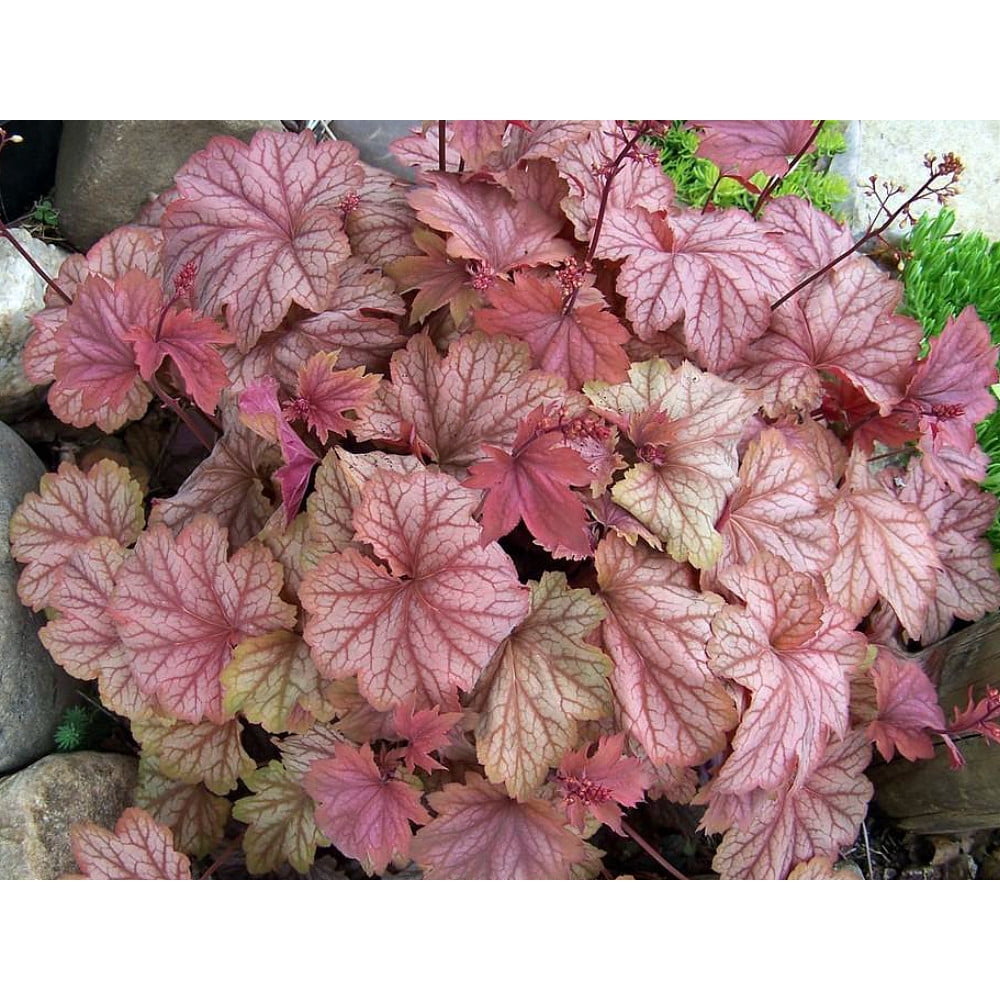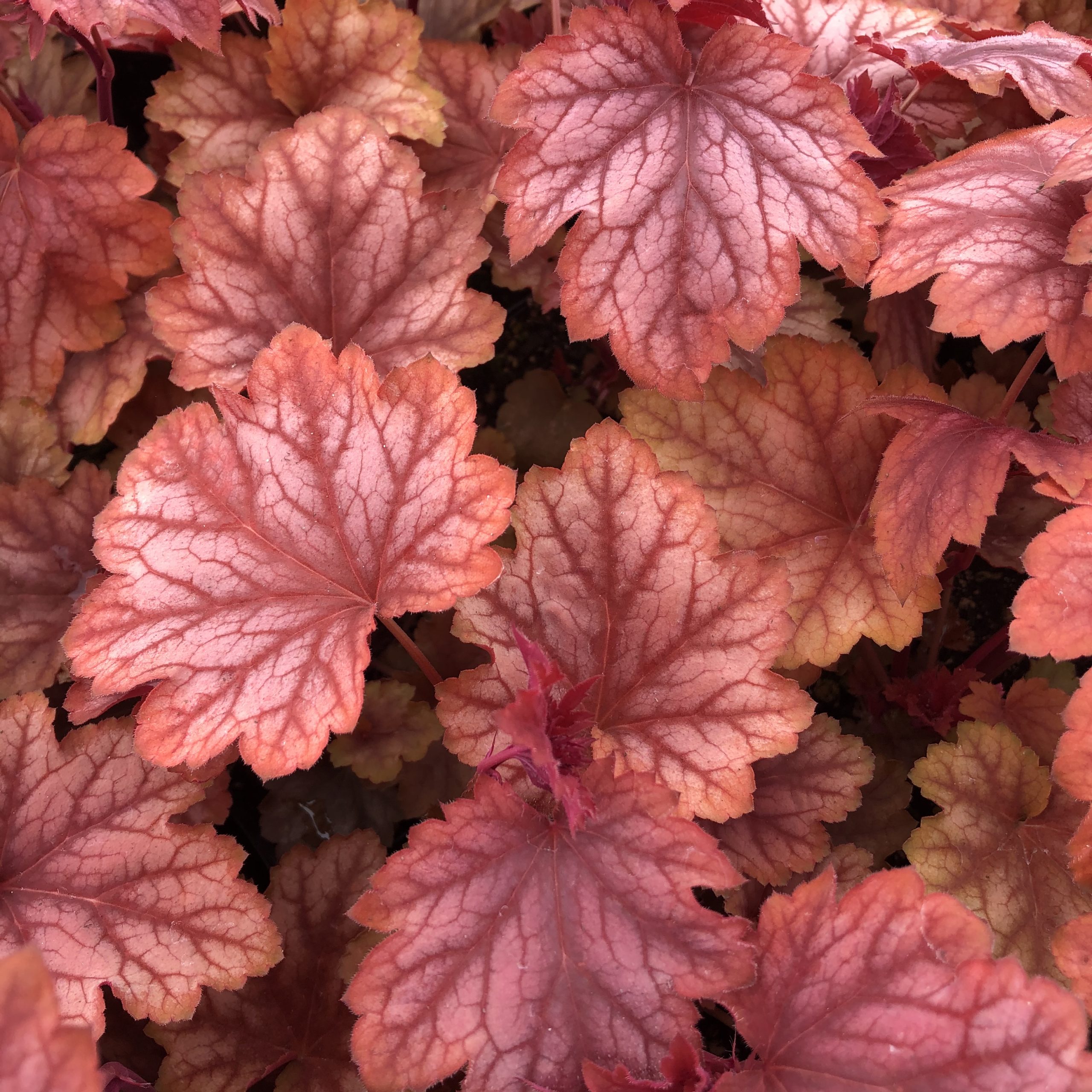Carnival Watermelon Coral Bells
The vibrant and stunning carnival watermelon coral bells are a must-have in any garden. With their beautiful multicolored leaves, they add a pop of color and a touch of whimsy to any landscape. But there's more to these plants than just their good looks. Let's dive deeper into the world of carnival watermelon coral bells and discover why they are a favorite among garden enthusiasts.
The Pain Points
Gardening can be a lot of work, and not all plants are created equal. Some require more maintenance than others, making it challenging to keep up with their care. When it comes to carnival watermelon coral bells, however, their care is relatively easy. They do require regular watering, but they are adaptable to different soil types and can thrive in full sun or partial shade. They don't require much pruning, making them a low maintenance garden favorite.
The Target of Carnival Watermelon Coral Bells
The carnival watermelon coral bells are specifically aimed at gardeners who want a beautiful and low maintenance plant. They are perfect for those who want to add a pop of color to their landscape without worrying about the plant's upkeep. They are an ideal choice for gardeners who are looking for a plant that is both aesthetically pleasing and easy to care for.
Summary of Benefits
Carnival watermelon coral bells are known for their beautiful multicolored foliage, which makes them a popular choice for gardeners. These plants require low maintenance, making them an ideal choice for those who want a beautiful garden without the work. They are adaptable to different soil types and can thrive in full sun or partial shade. Their ability to attract pollinators, such as hummingbirds and butterflies, makes them a perfect addition for any garden enthusiast.
A Personal Experience with Carnival Watermelon Coral Bells
I remember the first time I saw a carnival watermelon coral bell plant in a neighbor's garden, and I was immediately struck by how beautiful it was. The combination of pink and green leaves was eye-catching, and I knew I had to have it in my garden. I quickly purchased one and planted it in my backyard, and it has been thriving ever since. I love how easy it is to care for, and it always adds a pop of color to my garden.
Attracting Pollinators with Carnival Watermelon Coral Bells
One of the best things about carnival watermelon coral bells is that they attract pollinators, such as hummingbirds and butterflies. These pollinators are essential for any garden ecosystem, and carnival watermelon coral bells provide a perfect food source for them. By planting these colorful plants in your garden, you can help attract and support a diverse range of pollinators.
Adapting to Different Soil Types
Carnival watermelon coral bells are known for their adaptability to different soil types. They can thrive in well-drained soils, but they can also grow in heavy soils, making them a versatile addition to any garden. This adaptability is particularly helpful for gardeners who live in areas with challenging growing conditions, as carnival watermelon coral bells can grow in a variety of soil types and conditions.
The Importance of Regular Watering
Carnival watermelon coral bells require regular watering to thrive. While they can survive short periods of drought, they do better when they have consistent moisture. To ensure that your carnival watermelon coral bells thrive, make sure to water them consistently and avoid letting the soil dry out completely.
Question and Answer
Question 1: What is the best time of year to plant carnival watermelon coral bells?
Answer: The best time to plant carnival watermelon coral bells is in the spring or fall. Planting them during these seasons allows them to establish a strong root system before the summer heat or winter frost sets in.
Question 2: How big do carnival watermelon coral bells get?
Answer: Carnival watermelon coral bells typically grow to be 10-12 inches tall and wide. They are a relatively compact plant, making them an excellent choice for smaller gardens or container planting.
Question 3: Do carnival watermelon coral bells attract bees?
Answer: While carnival watermelon coral bells primarily attract hummingbirds and butterflies, they can also attract bees. These pollinators are beneficial to any garden ecosystem and should be encouraged, as they help promote healthy plant growth.
Question 4: How do you care for carnival watermelon coral bells?
Answer: Carnival watermelon coral bells require regular watering and can thrive in full sun or partial shade. They do not require much pruning, and their adaptability to different soil types makes them a low maintenance plant. To ensure they thrive, make sure to water them consistently and avoid letting the soil dry out completely.
Conclusion of Carnival Watermelon Coral Bells
Carnival watermelon coral bells are a beautiful and low maintenance plant that can add a pop of color to any garden. Their adaptability to different soil types and ability to attract pollinators make them a versatile and beneficial addition to any landscape. If you're looking for a plant that is both aesthetically pleasing and easy to care for, carnival watermelon coral bells should definitely be on your list.
Gallery
Carnival Watermelon Coral Bells
Photo Credit by: bing.com / bells carnival watermelon coral heuchera
Carnival Watermelon Coral Bells - Heuchera - Live Plant - Gallon Pot

Photo Credit by: bing.com / watermelon heuchera
Carnival Watermelon Coral Bells (Heuchera 'Watermelon') In Reno Sparks
Photo Credit by: bing.com / watermelon carnival bells coral foliage plant heuchera plants
'Carnival Watermelon' Coral Bells

Photo Credit by: bing.com / watermelon coral bells carnival centertonnursery
Heuchera X Villosa 'Carnival Watermelon' - Coral Bells USPP #24,803 (4.

Photo Credit by: bing.com / heuchera watermelon villosa uspp